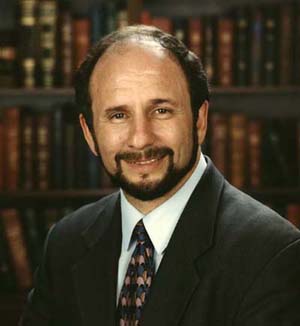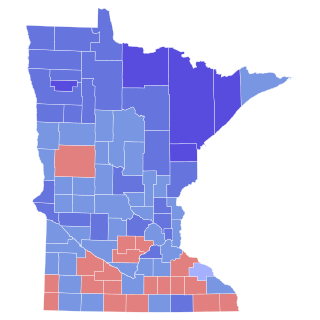
Hubert Horatio Humphrey Jr. was an American pharmacist and politician who served as the 38th vice president of the United States from 1965 to 1969. He twice served in the United States Senate, representing Minnesota from 1949 to 1964 and 1971 to 1978. As a senator he was a major leader of modern liberalism in the United States. As President Lyndon B. Johnson's vice president, he supported the controversial Vietnam War. An intensely divided Democratic Party nominated him in the 1968 presidential election, which he lost to Republican nominee Richard Nixon.

Hubert Horatio "Skip" Humphrey III is an American retired politician who served as attorney general of the state of Minnesota (1983–99) and State Senator (1973–83). Humphrey led the Office of Older Americans as the assistant director at the Consumer Financial Protection Bureau (CFPB).

Muriel Fay Humphrey Brown was an American politician who served as the second lady of the United States from 1965 to 1969, and as a U.S. Senator from Minnesota in 1978. She was married to the 38th vice president of the United States, Hubert Humphrey. Following her husband's death, she was appointed to his seat in the United States Senate, serving for most of the year 1978, thus becoming the first woman to serve as a senator from Minnesota, and the only Second Lady of the United States to hold public office. After leaving office, she remarried and took the name Muriel Humphrey Brown.

The 1978 United States Senate elections in the middle of Democratic President Jimmy Carter's term. Thirteen seats changed hands between parties, resulting in a net gain of three seats for the Republicans. Democrats nevertheless retained a 58–41 majority.

The 1972 United States Senate elections coincided with the landslide re-election of Republican President Richard Nixon. Despite Nixon's landslide victory, Democrats increased their majority by two seats. After the elections, Democrats held 56 seats, and Republicans held 42 seats, with 1 Conservative and 1 independent senator. These were the first elections in which all citizens at least 18 years of age could vote, due to the 1971 passage of the 26th Amendment.

The 1970 United States Senate elections was an election for the United States Senate, taking place in the middle of Richard Nixon's first term as President. The Democrats lost a net of three seats, while the Republicans and the Conservative Party of New York picked up one net seat each, and former Democrat Harry F. Byrd Jr. was re-elected as an independent.

Minnesota is known for a politically active citizenry, with populism being a longstanding force among the state's political parties. Minnesota has consistently high voter turnout; in the 2008 U.S. presidential election, 77.8% of eligible Minnesotans voted – the highest percentage of any U.S. state or territory – versus the national average of 61.7%. This was due in part to its same day voter registration laws; previously unregistered voters can register on election day, at their polls, with evidence of residency.
Hubert Horatio Humphrey served as the 38th Vice President of the United States (1965–1969), as a United States senator from Minnesota, and as the 35th mayor of Minneapolis, Minnesota (1945–1948).

The 1996 United States Senate election in Minnesota was held on November 5, 1996. Incumbent Democrat Paul Wellstone won reelection to a second term defeating former Republican Senator Rudy Boschwitz in a rematch.

The 1982 United States Senate election in Minnesota was held on November 2, 1982. Incumbent Republican U.S. Senator David Durenberger was reelected to his first full term.

The 1988 United States Senate election in Minnesota was held on November 8, 1988. Incumbent Republican U.S. Senator David Durenberger won re-election to his second full term. He was challenged by democratic Hubert "Skip" Humphrey III, the son of former vice president Hubert Humphrey. The seat had previously been held by both of Skip Humphrey's parents.

The 1934 United States Senate election in Minnesota took place on November 6, 1934. Incumbent Farmer–Labor U.S. Senator Henrik Shipstead defeated former State Senator Nathaniel J. Holmberg of the Republican Party of Minnesota and U.S. Representative Einar Hoidale of the Minnesota Democratic Party to win a third term.

The 1978 United States Senate election in Minnesota was held on November 7, 1978. Incumbent Democratic U.S. Senator Wendell Anderson was defeated by Republican challenger Rudy Boschwitz.

The 1948 United States Senate election in Minnesota took place on November 2, 1948. It was the first election held for Minnesota's Class 2 seat in the United States Senate since the Minnesota Democratic Party and the Farmer-Labor Party of Minnesota merged in 1944 to form the Minnesota Democratic-Farmer-Labor Party. Democratic Mayor of Minneapolis and future Vice President Hubert H. Humphrey defeated incumbent Republican Joseph H. Ball, who sought a third term in the Senate. This is the first time a Democrat won a Senate seat in Minnesota through popular vote election.

The 1916 United States Senate election in Minnesota took place on November 7, 1916. It was the first election for either class of U.S. Senators held in Minnesota after the ratification of the Seventeenth Amendment to the United States Constitution, which established the popular election of United States Senators. Incumbent Senator Moses E. Clapp was defeated in the Republican primary election by former American Bar Association president Frank B. Kellogg. Kellogg went on to defeat former St. Paul Mayor Daniel W. Lawler of the Minnesota Democratic Party, and Prohibition Party challenger Willis Greenleaf Calderwood, in the general election.

The 1928 United States Senate election in Minnesota took place on November 6, 1928. Incumbent Farmer–Labor U.S. Senator Henrik Shipstead defeated his Republican challenger, former St. Paul mayor Arthur E. Nelson, to win a second term.

The 1954 United States Senate election in Minnesota took place on November 2, 1954. Incumbent Democratic U.S. Senator Hubert H. Humphrey defeated Republican Minnesota State Treasurer Val Bjornson, to win a second term.

The 1964 United States Senate election in Minnesota took place on November 3, 1964. Incumbent Democratic U.S. Senator Eugene McCarthy defeated Republican challenger Wheelock Whitney Jr., to win a second term.

The 1966 United States Senate election in Minnesota took place on November 8, 1966. Incumbent Democratic U.S. Senator Walter Mondale, who had originally been appointed in 1964 to replace Hubert Humphrey after Humphrey was elected Vice President of the United States, defeated Republican challenger Robert A. Forsythe, to win a full term.

The 1970 United States Senate election in Minnesota took place on November 3, 1970. Incumbent Democratic U.S. Senator Eugene McCarthy opted not to seek reelection. Former Democratic U.S. Senator, Vice President and 1968 presidential nominee Hubert Humphrey defeated Republican U.S. Representative Clark MacGregor.






















